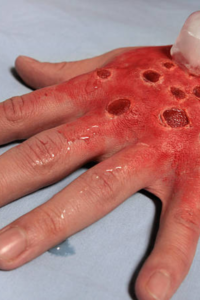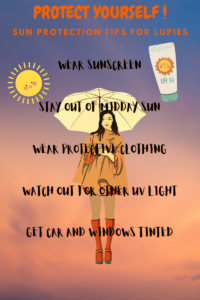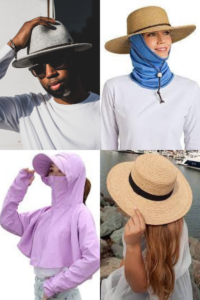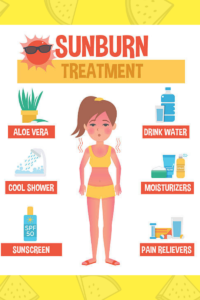Managing Lupus & Photosensitivity
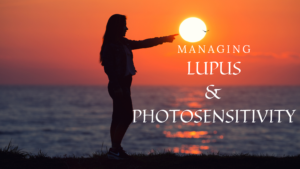
After many days of the cold and rainy weather we had, I woke up to the glorious sight of the early morning rays of sunlight streaming in through my bedroom window. It was a soft yellow light filtered by my lace curtains blowing lazily with the slight morning breeze. As the gentle rays kissed my skin, I felt a deep sense of euphoria. I gave myself ten more blissful minutes with a smile on my face to enjoy this treasured feeling. I woke up stretching like a Cheshire cat, stretching my aching bones and muscles. I gathered my heavy curtains in my hands and gave the beautiful sunlight one last wistful look; and drew them closed.
I find myself treasuring these simple moments that so many people take for granted. Because of my Lupus, I am sensitive to sunlight. Maybe, if I cover up completely, I can venture out and enjoy the day like everyone else. It is my fear of past experiences that prevents me from doing so.
For me, exposure to the sun has caused a few of my flair-ups. They were awful traumatizing experiences.
I remember the worse one being after I accompanied my son on a school field trip.
I came home sunburnt which, later turned into blisters. As the days went by, my joints became swollen and inflamed. Between the sunburnt skin, blisters, and inflamed joints I, could hardly move. Taking a shower was like having a million tiny needles piercing my skin.
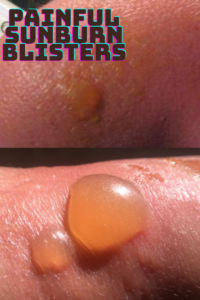
I picked up a bladder infection and was prescribed antibiotics that gave me diarrhea and nausea. Eventually, even the water that I consumed got expelled from my body. I felt broken, weak, and pathetic. It broke my heart to see my boys keeping Vergil at my bedside, not knowing how to help me.
The infection spread to my blistered skin. It was at that point I was hospitalized. My hemoglobin levels dropped to 5, and I had to have a blood transfusion. I spent five days in the hospital, but it took me weeks to get back on my feet again. Doctors explained that it triggered my immune system to go into overdrive.
Lupus & Sun Exposure
Why are people with Lupus so sensitive to Light?
Many people with Lupus experience photosensitivity or unusual sensitivity to sunlight. Excess sun exposure may trigger symptoms such as:
- Lupus rash or lesions
- fatigue and weakness
- joint pain
- internal organ swelling and sometimes even organ damage.
Ultraviolet (UV) light exposure whether, from the sun or a lamp-because artificial light with UV rays can cause damage to everyone’s cellular DNA. Sources of these artificial lights include:
- Fluorescent lighting
- photocopiers
- tanning beds
In people with Lupus, the cells become more sensitive to the damage caused by UV radiation. Usually, when exposed to UV radiation, the cells are damaged, the immune system clears them, but people with Lupus tend to have the dead cells stick around in the body triggering an immune system attack. Even an insignificant amount of exposure can be very disastrous for a person with Lupus. That is because Lupus progresses photosensitivity, making unprotected skin cells more vulnerable to UV damage.
WAYS TO PROTECT YOUR SKIN
Although medications help alleviate the symptoms, I firmly believe that ‘Prevention is better than cure.’
The safest way to prevent a Lupus flair-up and guard your photosensitive skin is to reduce your exposure to sunlight. If you have to go out, then take precautionary measures to protect yourself. Ways that you can do that include:
SUNSCREEN
Sunscreen should be applied every day, whether you are in or out of the house. Make it part of your daily ritual.
When leaving the house, apply it about 15 minutes before you exit.
Apply a broad-spectrum (UVA/UVB), water-resistant sunscreen with an SPF of 50 or higher.
Use enough lotion to cover up all exposed areas. Don’t forget your ears, neck, hands, and the tops of your feet if you are wearing open shoes.
PROTECTIVE CLOTHING
If you are not the type that likes to slather sunscreen all over your body every day, then I got you covered. You can minimize your exposure by wearing protective clothing that can provide you with complete skin coverage.
Instead of shorts and tang-tops, cover up with full sleeves shirts and loose linen pants, and skirts made from lightweight, tightly woven dark-colored material. Don’t forget that wide-brimmed hats and sunglasses are an added protection.
Certain types of fibers also provide more protection than others. Unbleached cotton absorbs UV rays, while polyester and silk with high sheen reflect UV radiation. You can also find high-tech ”sun-protective clothing” designed to block UV rays at many sporting goods stores.
Sun protective clothing also has a rating known as the ultraviolet protection factor(UPF). Look for clothes labeled with a UPF of 25 to 50 or higher.
Stay In The Shade
Apart from your sunscreen and protective clothing, also try and stay in the shade if you go out. If you need to go out, try and avoid doing so between 10 am and 4 pm.
Some helpful tips include:
- Avoiding the sun
- Wearing hats and protective clothing
- Applying sunscreen
- Staying hydrated
- Taking vitamin D supplements
Let’s debunk some myths about sun protection!
Sun damage is not possible on windy, overcast, or cool days.
FALSE You can get sun damage on windy, overcast, and cool days. Sun damage is a result of ultraviolet (UV) radiation, not temperature.
Sun damage is also achievable on cloudy days, as UV radiation can penetrate the clouds and may even be more extreme due to reflection off the clouds.
A fake tan darkens the skin, protecting the skin from the sun.
FALSE Fake tanning lotion does not increase your body’s ability to protect itself from the sun, so you will still need sun protection. Some fake tans have an SPF rating but, this should not be relied on for continued protection.
Sunscreen is not necessary when using cosmetics with SPF.
FALSE Unless cosmetics have an SPF30 or higher rating -you should wear additional sunscreen under your makeup if you’re going to be in the sun for an extended period.
You can stay out longer in the sun when you are wearing SPF50+ than you can with SPF30.
FALSE No sunscreen is a shield. It should not be applied to extend the amount of time you spend in the sun.
Though it may sound like there is a big difference, SPF50+ only offers marginally better protection from UVB radiation, which causes sunburn. SPF30 sunscreens filter about 96.7% of UV radiation, SPF50+ sunscreens filter 98% of UV.
Plenty of sun exposure is required to avoid vitamin D deficiency.
FALSE you; shouldn’t expose yourself to potentially harmful UV to get more vitamin D.
Research suggests that prolonged sun exposure does not cause vitamin D levels to continue to increase further. It, however, does enhance the risk of skin cancer.
People who may be at higher risk of vitamin D deficiency include:
- people with naturally very dark skin
- people with conditions or medications that impact vitamin D absorption
- those who cover their skin for religious or cultural reasons
- those with little or no sun exposure.
If you believe you’re at risk of vitamin D deficiency, consult your doctor.
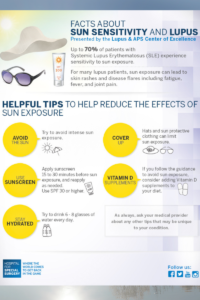
If you tan but don’t burn, you don’t need to bother with sun protection.
FALSE There’s no such thing as a safe tan. If your skin darkens, it is an indication of skin cells in trauma.
Skin darkens as a way of trying to protect itself because the UV rays are damaging living cells. If you tan easily, you are still at risk of skin cancer and need sun protection.
You can’t get burnt in the car through a window.
FALSE You can get burnt through a car window. Untinted glass commonly used in car side windows reduces but does not block transmission of UV radiation.
My Final Thoughts
It is a known fact and is also scientifically proven that the sun has many health benefits. One of the most beneficial is that it releases a mood-enhancing endorphin called serotonin.
Serotonin improves mood and energy. It also leaves you feeling calm and focused and effectively reducing stress. Sunshine prevents the production of the sleep-inducing hormone melatonin. As soon as it gets dark, you start producing melatonin, and as a result, you want to sleep making, your body enters into rest mode.
The balance between these two is called your circadian rhythms. It improves the quality of sleep, eases symptoms of depression, and aids concentration.
Ten to fifteen minutes a day can also get a person their vitamin D fix. For a person, this is enough to get your daily recommended dose of vitamin D. Vitamin D is well known for promoting healthy bones and teeth. But it does so much more like improving brain function which, can improve memory and protect against dementia.
So while the sun provides us with many beneficial things, for a person with Lupus that has photosensitivity, it can cause flair-ups ranging from mild to severe. Maybe because I have experienced it first hand, that makes me so cautious, but I will always believe that prevention is better than cure. At first, it was hard to make changes, but after a while, I got used to it and, it became a way of life for me.
If you have Lupus and suffer from photosensitivity, as I do, take the time and steps to protect yourself. The possibility of a flair-up is so not worth a little fun in the sun.
